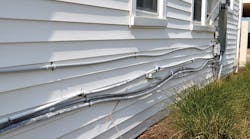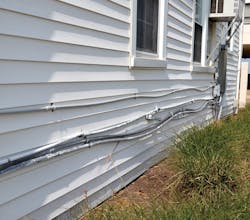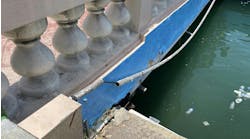How well do you know the Code? Think you can spot violations the original installer either ignored or couldn't identify? Here's your chance to moonlight as an electrical inspector and second-guess someone else's work from the safety of your living room or office. It's your turn to identify the violation.
Hint: Expand your mind.
June Winners
Our three winners this month are: Joseph Bradley, manager of estimating, E.S. Boulos Co., Westbrook, Maine; John Grzesiak, electrical engineering manager, J&D Electric, Milton, Fla.; and Paul Timmerman, a journeyman wireman with IBEW 1 in Hillsboro, Mo. Each winner was able to correctly identify the following Code violations in this photo.
Section 314.28(C) requires pull and junction boxes to be provided with covers that are suitable for the conditions of use. Neither this cover nor the box was suitable for these conditions, considering they are completely smashed and destroyed.
Section 300.4 requires conductors, cables, and raceways to be protected where exposed to physical damage. Using a PVC box was obviously not the best option for this location. Metal raceways and boxes would have been a better choice here.
Section 352.48 requires joints between PVC conduit and boxes to be made in an approved manner. I don’t believe that was meant to include stuffing the conduit into the box without a connector as this installer did.
Section 352.46 requires a protective fitting or bushing to be used where the PVC conduit enters the box. No fittings were used for this installation.
Lastly, these broken parts violate the requirements of Sec. 110.12(B).






